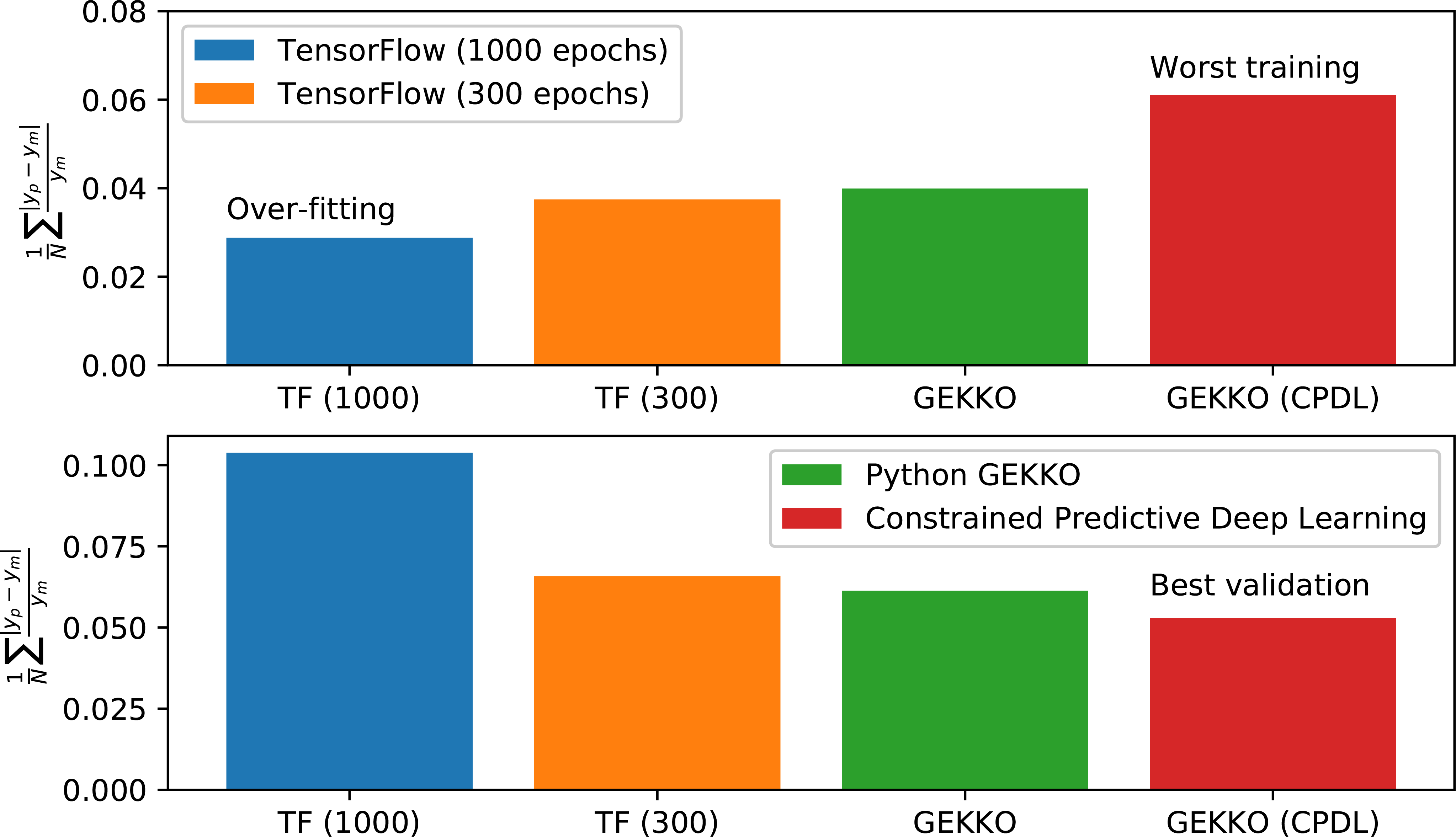2022 Annual Meeting
(245h) Physics-Informed Deep Learning for Prediction of Thermophysical Properties: The Parachor Method for Surface Tension
Authors
One example of a relevant thermophysical property is surface tension which is needed to design distillation columns, adsorption processes, gas-liquid reactors, and liquid-liquid extractors, and to improve oil reservoir recovery [1]. It is also crucial to understanding environmental and health effects of chemicals. Because of the complexity of the experiments, reliable data for surface tension are not available for many compounds of interest. While multiple methods exist to predict this property, the so-called âparachorâ method of Sugden [2], has emerged as the preferred method [3]. Sugden, based on earlier work by Macleod [4], proposed the following relationship to determine the surface tension (Ï).
Ï = [P(ÏL â ÏV)]4
Here, ÏL is the density of the saturated liquid at the temperature of interest, ÏV is the density of the saturated vapor at the temperature of interest, and P is a temperature-independent parameter called the parachor. In the original formulation, Sugden assumed P was additive with respect to the atomic composition and the bonding structure of the compound. Quayle [5] later recognized that the parachor is sensitive to structure and expanded the Sugden groups to include more structural information. About 50 years later, Knotts et al. [3] sought to include even more structural information into the prediction of the parachor and created an expansive âgroup contributionâ method to this end.
The contributions to the parachor should be strictly additive in nature as it represents a volume of space a molecule occupies. However, the approaches mentioned above have several âgroupsâ which are negativeâsuggesting a suboptimal optimization relating parachor to the groups. We recently combined machine learning (ML) with a physics based constraint to achieve better predictions that any previous method. This presentation will outline these efforts and also compare them to standard machine learning approaches.
Figure 1 is an example of the results. The average absolute error between the predicted and the experimental parachor is shown for multiple ML prediction methods from 277 compounds split into a training set (top) and a test (validation) set (bottom). The left two bars of each plot are for training with TensorFlow from Nvidia (standard ML) for 1000 and 300 epochs (the number of times the algorithm works through the entire training set). The green bar is for training with the python package GEKKO (standard optimization written by one of the authors), and the red bar (farthest right) is for training with a newly developed ML method with constraints termed CPDL (constrained predictive deep learning). Notice that standard ML (TensorFlow) results in the lower errors for the training set but performs the worst for predicting the validation set. This is indicative of over-fitting the data. Contrastingly, the proposed method, which incorporated the physical constraint that the parachor contributions be strictly additive, fits the training set poorly but produces the best prediction. Taken as a whole, these results offer significant hope that combining physics-based constraints with machine learning can produce step-change improvements in prediction method for the physical properties that are crucial in the field of chemical engineering.
References Cited
[1] . Gharagheizi, A. Eslamimanesh, A. H. Mohammadi, and D. Richon: Ind. & Eng. Chem. Res., 50: 5815â5823 (2011).
[2] S. Sugden: J. Chem. Soc. Trans., 125: 32â41 (1924).
[3] T. A. Knotts, W. V. Wilding, J. L. Oscarson, and R. L. Rowley: J. Chem. Eng. Data, 46: 1007â1012 (2001).
[4] D. B. Macleod: Trans. Faraday Soc., 19: 38â41 (1923).

